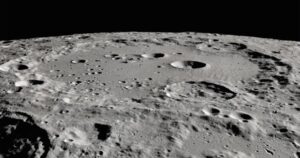
The Indian Space Research Organization (ISRO) plans to send its Chandrayaan-3 (Chandrayaan-3) automated interplanetary station to the Moon on Friday.
The Chandrayaan-3 mission is scheduled to be launched on July 14, 2023, at 2:35 p.m. Indian time (12:05 a.m. QT) from the launch pad of the Satish Dhawan Space Center located on Sriharikota island.
According to the organization’s plan, the spacecraft will be launched into orbit using an LVM-3 launch vehicle, after which the probe will begin its autonomous flight to near-lunar orbit.
The Chandrayaan-3 station consists of three components – a landing module, a propulsion module and a lunar rover – whose main purpose is to demonstrate and test the technologies required for interplanetary missions.
After the spacecraft enters lunar orbit, its landing module will have to make a soft landing on the surface of the Moon, then the rover, equipped with various research equipment, will move off the platform and begin chemical analysis of the surface of the natural satellite of the Earth. The lunar rover mission is designed to last 14 Earth days.
A previous attempt to send a landing module and a lunar rover to the Moon was made in 2019 as part of the Chandrayaan-2 mission. Then the orbiter managed to enter the lunar orbit, but due to communication problems, specialists were unable to correct the landing of the landing module separated from the interplanetary station, as a result of which it crashed on impact with the lunar surface.
Orbiter mission Chandrayaan-2 remained in orbit and continues to collect scientific data on the Earth’s natural satellite. No such orbiter mission is planned for Chandrayaan-3.